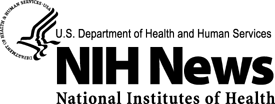22 Mar 2001: Federal Government Makes Final Call for Data, Public Comment before Writing New Report on Cancer-Causing Substances
Do estrogens, wood dust, a common solvent called trichloroethylene, the flavoring methyleugenol and the antibiotic chloramphenicol cause human cancer under some circumstances? The National Toxicology Program (http://ntp.niehs.nih.gov/), headquartered at the National Institute of Environmental Health Sciences (http://www.niehs.nih.gov), today sought final public comments and data on these and several other substances and exposures before recommending whether to list them as human carcinogens in the federal government's tenth and newest Report on Carcinogens (http://ntp.niehs.nih.gov/go/roc).
Comments will be accepted for 60 days.
Last year, two federal science committees and one public peer review panel with non-government members looked at eight nominated substances. The three scientific review committees evaluated available, published data relevant to listing these substances as "known" or, with less complete data, as "reasonably anticipated to be" causes of human cancer. Here are the substances reviewed:
- Trichloroethylene. This widely used metal degreasing solvent was unanimously recommended for upgrading from "reasonably anticipated" to listing as a "known" human carcinogen by one government panel, the NIEHS Review Committee, but the upgrade was turned down, 4 to 3, by the second government panel representing other agencies and regulators, and by the public panel. If not upgraded, trichloroethylene would continue to be listed as "reasonably anticipated to be a human carcinogen."
- Estrogens. Steroidal estrogens, which are used in some post-menopausal therapy and as oral contraceptives, were recommended as "known" human carcinogens by unanimous votes of the two government panels and 8 to 1 by the public panel. Conjugated estrogens, a subgroup of the broad group of steroidal estrogens, are already listed as "known" and drug labeling or package inserts discuss the possible side-effects that occur in some people.
- Wood dust. All three panels, after reviewing the data, unanimously recommended wood dust, produced in furniture and cabinet manufacturing, as a "known" human carcinogen.
- UV Radiation, UVA, UVB and UVC. All three panels voted unanimously to recommend broad spectrum ultraviolet radiation, whether from the sun or from artificial sources, be listed as a "known" human carcinogen. The lengths, UVA, UVB and UVC were each recommended for listing as "reasonably anticipated to be a human carcinogen."
- Methyleugenol. All three panels recommended this flavoring, traces of which are used in some jellies, baked goods, nonalcoholic beverages, chewing gum, candy and ice cream, be listed as "reasonably anticipated" to be a human carcinogen. Methyleugenol is also used as a fragrance in many perfumes and cosmetics and occurs naturally in many foods.
- Chloramphenicol. All three panels (with one person abstaining in one of the panels) unanimously recommended the highly restricted antibiotic chloramphenicol be listed as "reasonably anticipated to be a human carcinogen." The drug is considered a "last resort" antibiotic under certain circumstances where other antibiotics have failed.
- Nickel and certain nickel alloys. Used in commercial operations for more than 100 years, metallic nickel and certain of its alloys were recommended as "reasonably anticipated" by a vote of 6 to 2 in the initial NIEHS committee, but the second and third panels voted against the alloys being listed, recommending only that nickel itself be listed.
- Talc. Natural mineral talc containing a distinctive fiber shape, called asbestiform fibers, was approved for listing as a known human carcinogen by the NIEHS panel but rejected by the second government panel, which voted 6 to 2 for its listing as "reasonably anticipated to be a human carcinogen." The public panel split 5 to 5 on whether it should even be listed as "reasonably." The two government panels recommended that talc that does NOT contain asbestiform fibers should be listed as "reasonably anticipated to be a human carcinogen" but the public panel voted 7 to 3 that it not be listed at all. This last panel did not consider studies linking ovarian cancer and talc because it was not clear whether the talc contained asbestiform fibers or not.
Additional information can be obtained from the NTP Home Page web site at http://ntp.niehs.nih.gov/ (http://ntp.niehs.nih.gov/) or by contacting C. W. Jameson, NTP Mail drop EC-14, P.O. Box 12233, Research Triangle Park, NC 27709; phone: (919) 541-4096, fax: (919) 541-0144, email: jameson@niehs.nih.gov. Comments also should be addressed to Dr. Jameson.
The Report on Carcinogens is a Congressionally mandated listing of known human carcinogens and reasonably anticipated human carcinogens and its preparation is delegated to the NTP by the Department of Health and Human Services (http://www.hhs.gov)  . The law states that the reports should provide available information on the nature of exposures, the estimated number of persons exposed and the extent to which the implementation of current federal regulations decreases the risk to the public.
. The law states that the reports should provide available information on the nature of exposures, the estimated number of persons exposed and the extent to which the implementation of current federal regulations decreases the risk to the public.
NIEHS/NTP plans to publish the tenth report next year.



